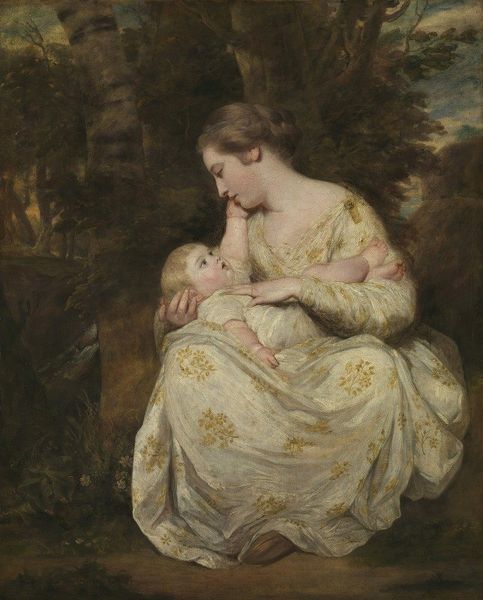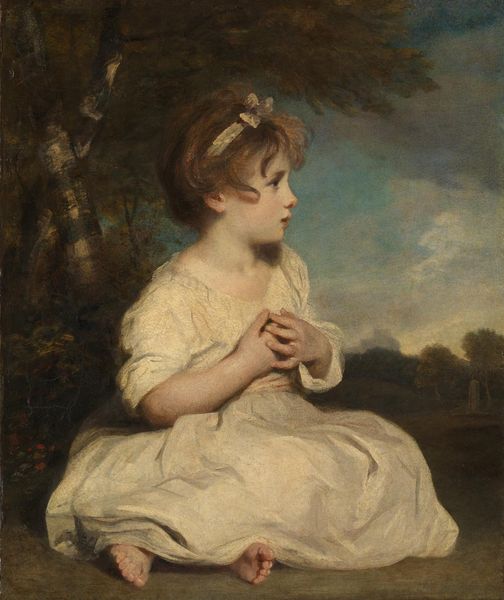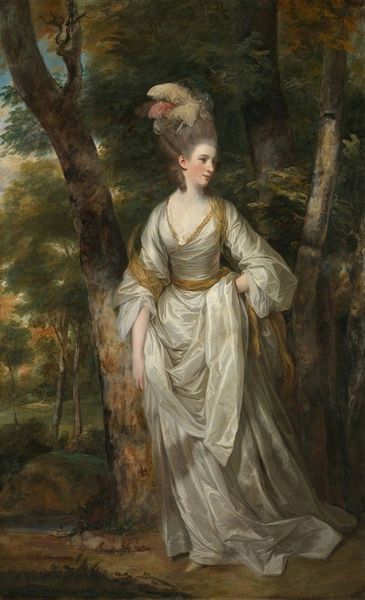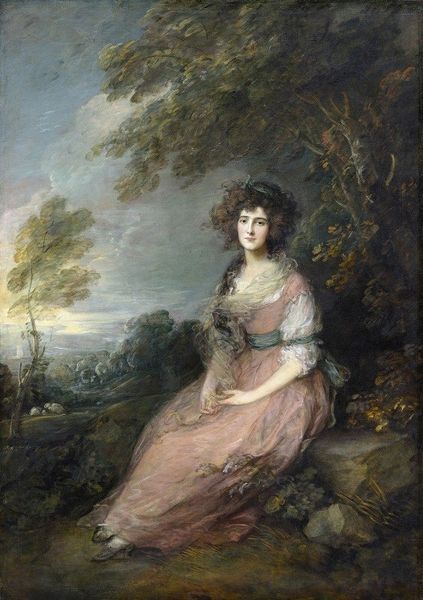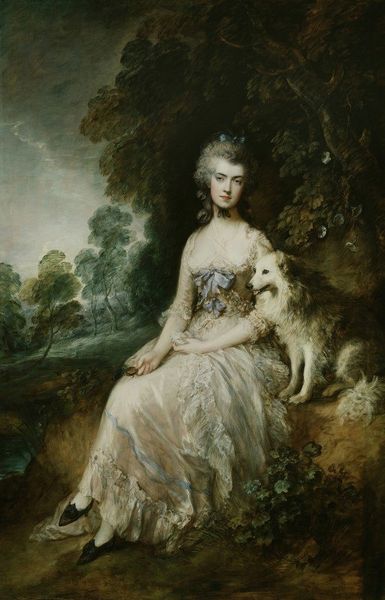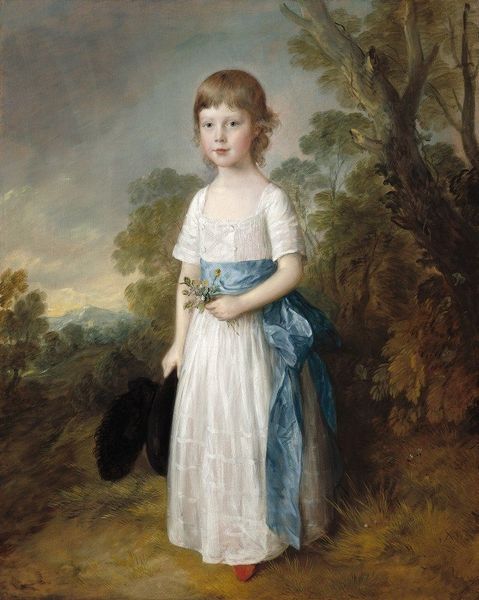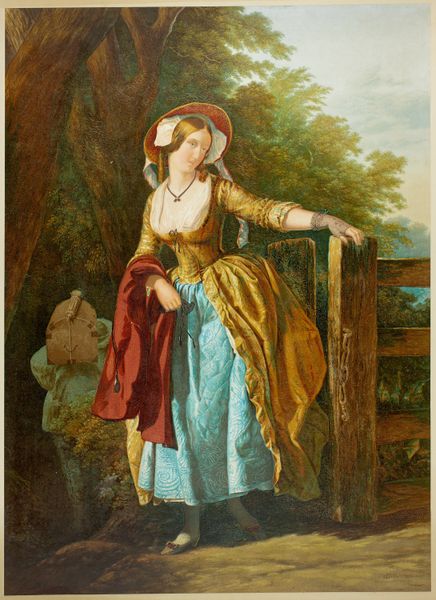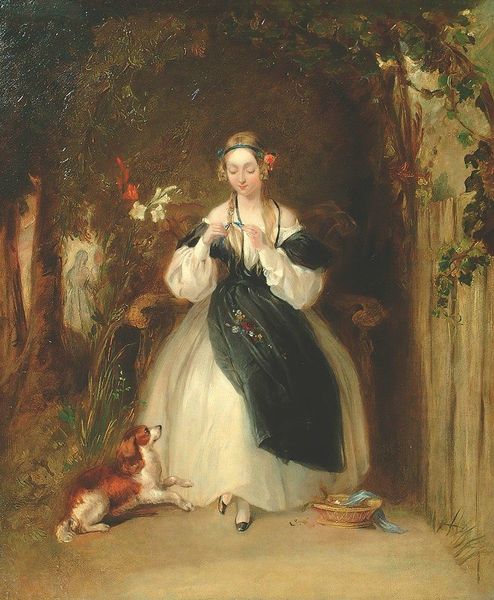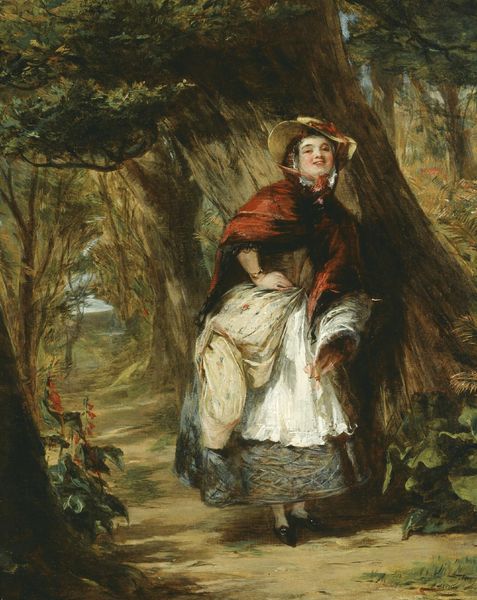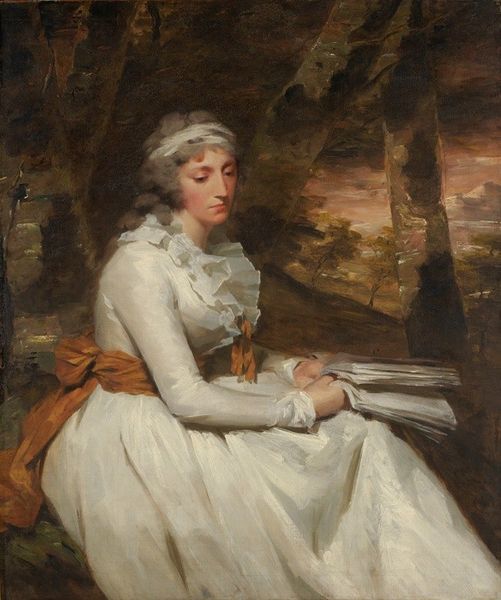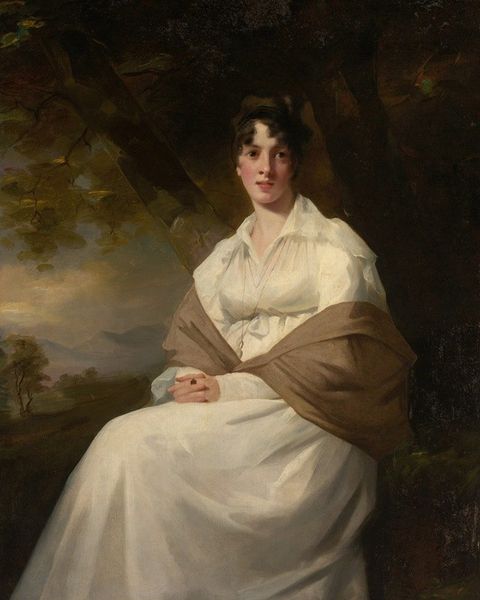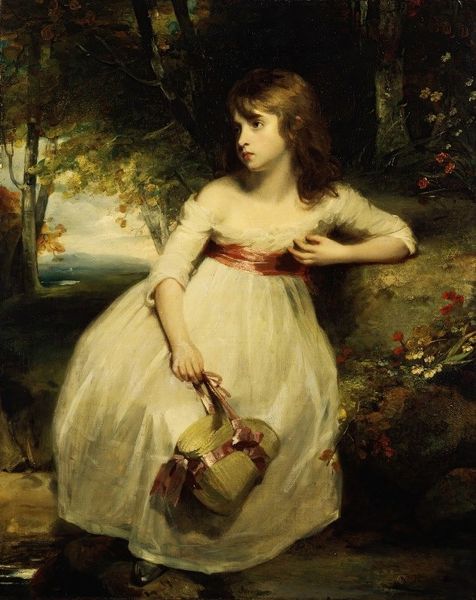
painting, oil-paint
#
portrait
#
figurative
#
painting
#
oil-paint
#
oil painting
#
portrait reference
#
romanticism
#
history-painting
#
academic-art
#
portrait art
Copyright: Public Domain: Artvee
Curator: Painted in 1831, Franz Xaver Winterhalter offers us this refined portrayal entitled, "Sophie Guillemette, Grand Duchess of Baden." The piece is rendered in oil paint. Editor: My first impression is one of serene composure. The soft color palette, her relaxed posture – there’s a quiet elegance that pervades the canvas. Curator: Indeed. Winterhalter, throughout his career, secured patronage amongst Europe’s elite by skillfully portraying their material wealth and status. The luxurious fabric draped across the Grand Duchess hints at the industrial production of textiles becoming accessible to higher classes. We can almost see the negotiation between aristocratic taste and emerging bourgeois values. Editor: And what about the composition? The placement of the figure, slightly off-center, allows for this intriguing dialogue between her figure and the landscape. Semiotically, this evokes Romanticism—placing the individual within the vastness of nature, a very subtle dance of power and vulnerability. Curator: Precisely! It’s not just a backdrop, it's part of the construction of identity, wouldn't you agree? We could explore how the Grand Duchess embodies ideals around femininity circulating in broader European society during a period of rapid industrial change. This portrait serves as a marker for elite identity formation deeply embedded within larger historical forces. Editor: You make a compelling case. Focusing purely on the visual language however, the brushwork is immaculate, a truly dazzling demonstration of the artist’s skill and mastery of oil paint, with the textures created mimicking a real sensorial feel to the eye, the smoothness of the skin, the richness of her stole. Winterhalter's skill transforms this royal figure into an idealized form. Curator: Don’t you think focusing solely on aesthetic technique limits an understanding of art’s significance? When one ignores these paintings' relation to economic systems it creates, at best, only incomplete analysis, if we are to be honest. Editor: Perhaps. But understanding its formal devices enhances the emotional connection and impact on the viewer! Ultimately, isn’t that part of art’s broader function, to elicit emotion? Curator: A vital part. And seeing how those emotions connect back into broader economic, political, and social contexts enhances its resonance all the more! Editor: Agreed. The way Winterhalter composed light and shadow offers depth that undeniably shapes this image of elevated status. Curator: Agreed. He and this piece both deserve our deepest attention.
Comments
No comments
Be the first to comment and join the conversation on the ultimate creative platform.
